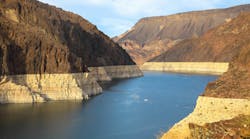Why Are We Afraid?
Every day we are bombarded by the press with new threats to our safety, our peace, our health, our children, and so on. Being an affluent and educated society, we predictably react by worrying about these perceived threats, insisting that our officials eliminate these threats, and spending enormous sums of tax dollars trying to reduce these threats. We have become a nation of what Saturday Night Live has parodied as “Frightened Families,” those whose hair stood on end in fear of everything in life and so became too paralyzed to function in the world.Sure, 9/11 brought many threats close to home. But we were a frightened nation before that. With so many threats constantly being trumpeted by the press, it is difficult to determine if these threats are real and, more importantly, what the magnitudes of these threats are. In this high-tech world, many of these threats require a high level of education or training to detect and/or analyze to determine if the threat is indeed real. Since we cannot all be scientists, we take the easy way out and depend on someone (usually the press) who we hope gives us a realistic evaluation of the threat of the day. The problem with depending on others to think for you is that you become an easy mark for those who have their own agendas to promote and newspapers to sell.In the civil engineering world, we have our share of new concerns and threats these days. We have terrorist threats to our nuclear plants and water supplies, we have polluted waterways, we have dying Everglades and coral reefs in the Keys, we have closed beaches, we have mosquitoes that are potential disease vectors, we have highways with speed limits over 55 mph, we have buildings in hurricane and earthquake zones, and we have still more. While some of these threats are very real and quantifiable, what is left out of the equation is the magnitude of the threat. Is it a life-threatening threat or just an illness threat? Is it a one-in-a-thousand threat or a one-in-ten-million threat? Is it preventable or an act of God? These are the types of questions we should ask ourselves before panicking with a knee-jerk response.For instance, in Brevard County, Florida, a local environmental group uses surfers to take samples of ocean water to test for Escherichia coli. Never mind that E. coli can come from birds, fish, or boats. The surfers did not have E. coli hits, but they did get hits on a nitrogen-14 isotope. They claim that this indicates the possibility that highly treated wastewater that is pumped 1,000 ft. down into a confined aquifer might be migrating back up to the ocean and contaminating it with bacteria. The press has had a field day over this bad science, and the county is spending $100,000 to determine if the nitrogen-14 isotope really means anything. As past articles in this magazine have indicated, testing for bacteria is a very inexact science and it is very difficult to pinpoint where the bacteria come from. Yet the press is being used by environmental groups to maintain a high profile and to generate funding for environmental studies.There also has been much discussion recently about mosquito threats–that is, “disease vectors” in political speak. It seems that some of the worriers out there are concerned that stormwater ponds and BMP sumps will spread West Nile virus (WNV). Part of the challenge that public officials have is balancing conflicting public needs. The public should be reasonably protected from risks from mosquitoes in BMPs. The public also demands (from environmental lawsuits) that officials clean stormwater runoff. This is a conflicting public need that requires balancing health versus costs. The risks from vectors in stormwater ponds cannot be calculated, but it is undeniable that the risks are very low. Not every pond will breed mosquitoes, and not many mosquitoes carry disease.The benefits from cleaner stormwater from treatment ponds in most areas of the country are very high. Ponds are among the best BMPs for removing multiple pollutants. They provide wildlife habitat and are far less expensive than trying to come up with alternative technology. In urban areas, sumped BMPs are often the only BMPs that can be used without spending hundreds of thousands of dollars tearing down houses to build ponds. Politically this is not an option in most areas.Stormwater retrofitting usually is underfunded in most communities (unless you are in California where communities agree to spend millions to settle environmental lawsuits). In order to optimize spending of tax dollars, communities should perform some type of cost/benefit analysis in choosing retrofit projects to meet total maximum daily load (TMDL) goals.In Florida, we have billions of mosquitoes and water everywhere. We require ponds to be built with every new development, and there is probably more surface water per acre in Florida than in any other state. Yet there are 14 states with more WNV cases than Florida. Our citizens accept the very low risk of the mosquito illness threat as a tradeoff for the benefits from stormwater ponds. Californians are terrified of wet BMPs, and yet they have had only two cases of WNV.
Number of WNV cases according to the Centers for Disease Control and Prevention as of January 2004Only 2.5% of WNV cases are fatal, with the remaining cases resulting in flulike symptoms. There were 211 WNV deaths last year, yet the press likens these numbers to an epidemic. The press should put threat numbers in perspective with other risks in America and stop trying to frighten us. For example, there are over 2,600,000 deaths each year. Some of the leading causes of death are these:Heart disease (733,834)Cigarettes (500,000)Automobiles (43,987)Guns (29,573)Alcohol and driving (17,126)Drowning (3,923)Bicycles (800)Boating (714)Airplanes (600)Trains (530) WNV (211) Lightning (188)Tornadoes (128)So the threat of WNV ranks up there with getting struck by lightning. Americans are willing to put up with higher risks every day from trains, planes, boats, bicycles, swimming, drinking, guns, cars, and cigarettes. Americans living in the Home of the Brave have become as frightened as mice.Last week’s threat was one case of mad cow disease. Boy, that’s going to make me swear off beef.
This week’s threat is avian flu. In China, a land of more than one billion people, eight people have died of avian flu. This is headline material? Give me a break.I believe that if the public saw the WNV risks in comparison to everyday life they would be willing to have their public officials construct wet BMPs to obtain the many known benefits of ponds, rather than have them spend many times more money on alternative BMPs that do not function as well and end up having much higher lifetime maintenance costs. We must keep these so-called threats in perspective. There are many more important things to worry about, and it is a whole lot cheaper to use mosquito repellant. I suggest we let the press know that these threats are non-issues and they should report more positive news and less doom and gloom.

